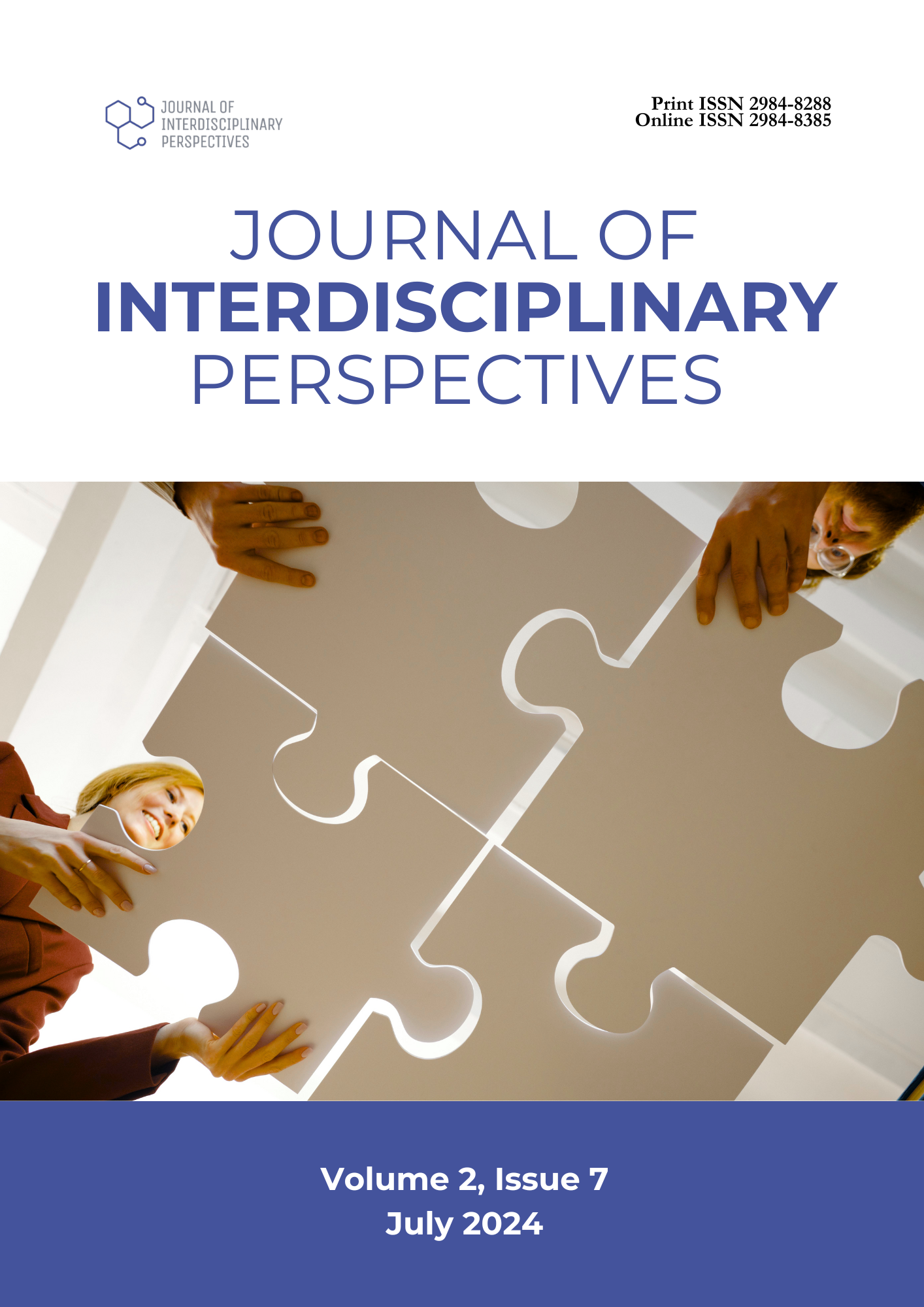The Relationship of Utilization of Digital Payment and Customer Satisfaction among DepEd Employees in Digos City
DOI:
https://doi.org/10.69569/jip.2024.0186Keywords:
Digital payment, Customer satisfaction, Department of educationAbstract
The research explored the relationship between digital payment utilization and customer satisfaction among DepEd employees in Digos City, with a specific focus on GCash services. It employs a descriptive-correlational design, analyzing responses from 100 DepEd employees to understand this dynamic. The findings indicate a high level of digital payment utilization and customer satisfaction, suggesting that digital payment methods are well-integrated and appreciated by the employees. A significant correlation exists between the frequency of digital payment use and customer satisfaction levels. This emphasizes the need for improved digital payment systems to enhance user experience and security. For instance, simplifying the transactional procedures, enhancing technical protection measures, and increasing the extent of digital payment use are identified as significant predictors of customer satisfaction, highlighting areas for potential improvement to increase satisfaction. The study underscores the importance of continuous innovation in digital payment systems to meet user needs and enhance satisfaction. The implications are particularly relevant for educational institutions transitioning to digital payments, as they can benefit from a more streamlined and secure payment process. The research recommends focusing on transactional efficiency, technical protection, and perceived benefits to improve user satisfaction and adoption rates. By addressing these areas, institutions can ensure that their digital payment systems are more user-friendly and secure, thereby increasing overall satisfaction and adoption. This study highlights the critical role of digital payment systems in modernizing financial transactions within educational institutions. Continuous improvement and innovation in these systems are essential to maintain high levels of user satisfaction and to support the broader adoption of digital payments.
Downloads
References
Amelia, E. (2019). Analisis perilaku minat menggunakan mobile payment dengan pendekatan technology acceptance model 3: Studi pada pengguna aplikasi pembayaran OVO. Thesis. Universitas Pendidikan Indonesia.
Ahmed, Awais & Aziz, Abdul & Muneeb, Muhammad. (2019). Electronic payment system: A complete guide. Journal of Multidisciplinary Sciences. 1. 1-17. 10.33888/jms.2019.121.
Bhandari, P. (2022, October 10). Correlational Research | When & How to Use. Scribbr. Retrieved October 11, 2022, from https://www.scribbr.com/methodology/correlational-research/
Bhatt, V., & Prajapati, F. (2018). An Empirical Study on Consumer's Securitization and faith on online payment in Gujarat. Retrieved October 15, 2022, from https://www.researchgate.net/profile/Viral-Bhatt/publication/329442552_An_Empirical_study_on_Consumer's_Securitization_and_faith_on_online_payment_in_Gujarat/links/60866a752fb9097c0c0cf4ce/An-Empirical-Study-on-Consumers-Securitization-and-faith-on-online-payment-in-Gujarat.pdf
Chaudhari, A. (2022, September 19). Descriptive Research Design. Voxco. Retrieved October 11, 2022, from https://www.voxco.com/blog/descriptive-research-design/
Chakravartty, S. (2018, June 12). Expectancy Disconfirmation Theory. https://www.linkedin.com/pulse/expectancy-disconfirmation-theory-sandeep-chakravartty
Fatonah, S., Yulandari, A., & Wibowo, F. W. (2018, December). A Review of E-Payment System in E-Commerce. Journal of Physics: Conference Series, 1140, 012033. https://doi.org/10.1088/1742-6596/1140/1/012033
F.S. Roozbahani. The_Role_of_E-Payment_Tools_and_E-Banking_in_Customer_Satisfaction_Case_Study_Pasargad_Bank_E-Payment_Company/links/5b03f8690f7e9be94bdb2544/The-Role-of-E-Payment-Tools-and-E-Banking-in-Customer-Satisfaction-Case-Study-Pasargad-Bank-E-Payment-Company.pdf
Hassan, M. A., Shukur, Z., Hasan, M. K., & Al-Khaleefa, A. S. (2020). A Review on Electronic Payments Security. Symmetry, 12(8), 1344.
Junadi, & Sfenrianto. (2015). A Model of Factors Influencing Consumer’s Intention To Use E-payment System in Indonesia. Procedia Computer Science, 59, 214–220. https://doi.org/10.1016/j.procs.2015.07.557
Jusoh, Z. M., & Jing, T. Y. (2019). Perceived security, subjective norm, self-efficacy, intention, and actual usage towards e-payment among UPM students. Journal of Education and Social Sciences, 12(2), 8–22. Retrieved from https://www.jesoc.com/wpcontent/uploads/2019/04/KC12_016.pdf
Khadka, K., & Maharjan, S. (2017). CUSTOMER SATISFACTION AND CUSTOMER LOYALTY. https://core.ac.uk. https://core.ac.uk/download/pdf/161421179.pdf
Kar, A. K. (2020, July 18). What Affects Usage Satisfaction in Mobile Payments? Modelling User-Generated Content to Develop the "Digital Service Usage Satisfaction Model." SpringerLink. Retrieved October 14, 2022, from https://link.springer.com/article/10.1007/s10796-020-10045-0?fbclid=IwAR2KjUVs0Dbq36Nf2iSawKlm9VDk74S5Z1kIXmhHSZMAsSKzQ2_mj1U4-Wk&error=cookies_not_supported&code=44f6e1ed-77c9-42fe-a5eb-9c4cd0561df9
Kim, C., Tao, W., Shin, N., & Kim, K. S. (2010, January). An empirical study of customers’ perceptions of security and trust in e-payment systems. Electronic Commerce Research and Applications, 9(1), 84–95. https://doi.org/10.1016/j.elerap.2009.04.014
Lee, Y. C., Wang, Y. C., Lu, S. C., Hsieh, Y. F., Chien, C. H., Tsai, S. B., & Dong, W. (2016, September 15). An empirical research on customer satisfaction study: a consideration of different levels of performance. SpringerPlus, 5(1). https://doi.org/10.1186/s40064-016-3208-z
Oliver, R. L. (1977). Effects of expectation and disconfirmation on post-exposure product evaluations: An alternative interpretation. Journal of Applied Psychology, 62(4), 480-486.
Oney, E., Oksuzoglu Guven, G., & Hussain Rizvi, W. (2017, January). The determinants of electronic payment systems usage from consumers’ perspective. Economic Research-Ekonomska Istraživanja, 30(1), 394–415. https://doi.org/10.1080/1331677x.2017.1305791
Potia, A., & Dahiya, K. (2020). Optimistic, digital, generous: COVID-19’s impact on Indonesian consumer sentiment. Retrieved from https://www.thejakartapost.com/academia/2020/04/19/optimistic-digital-generouscovid-19s-impact-on-indonesian-consumer-sentiment.html.
Primadineska, R.W., & Jannah, S.M. (2021). Perceived Security and Trust in Electronic Payment Systems: How They Affect the Decision to Use EPS During the COVID-19 Pandemic. Jurnal Manajemen Bisnis, 12(2), 236-247.
Rudresha, C. E. (2019, February). Cashless Transaction in India: A Study. https://ijsdr.org/papers/IJSDR1902011.pdf.
Sahi, A. M. (n.d.). The Research Trend of Security and Privacy in Digital Payment. MDPI. Retrieved October 14, 2022, from https://www.mdpi.com/2227-9709/9/2/32/htm
Segawa, G. (2018). Electronic Payment and Customer Satisfaction A Case Of Multiplex Street Parking In Wandengeya Kampala. http://umispace.umi.ac.ug/bitstream/handle/20.500.12305/734/GERALD%20SEGAWA%2014.MBA.11.044.pdf?sequence=1&isAllowed=y
Sieger, H. (2015). Perceived security and usage of a mobile payment application. Dissertation. Technische Universität Berlin, 126.
Sutia, S., Fahlevi, M., Saparudin, M., Irma, D., & Maemunah, S. (2020). Should e-Payment Trust be e-Commerce Implemented as a Consumer Satisfaction Factor? E3S Web of Conferences, 202, 16002. https://doi.org/10.1051/e3sconf/202020216002
Szyndlar, M., Perzynska, K., Perzynska, K., Perzynska, K., & Perzynska, K. (n.d.). Customer Satisfaction: Why It’s Important in 2022. Retrieved October 11, 2022, from https://survicate.com/customer-satisfaction/importance-customer-satisfaction/
Tella, A., & Abdulmumin, I. (2015, December 1). Predictors of Users’ Satisfaction with E-payment System: a Case Study of Staff at the University of Ilorin, Nigeria. Organizacija, 48(4), 272–286. https://doi.org/10.1515/orga-2015-0018
Tropp, M. (2019, July 23). The Problem With the Customer Satisfaction Survey. The Verde Group. https://verdegroup.com/customer-satisfaction-survey-problems
Vinitha, K., & Vasantha, S. (2018). Usage of E-Payment and Customer Satisfaction. Indian Journal of Public Health Research &Amp; Development, 9(3), 130. https://doi.org/10.5958/0976-5506.2018.00196.1
Ying, C. L. (2020, September 24). De geheimen van groeiende klanttevredenheid. Zendesk NL. Retrieved October 12, 2022, from https://www.zendesk.nl/blog/3-steps-achieving-customer-satisfaction-loyalty/#georedirect
Zhang, J., Luximon, Y., & Song, Y. (2019). The role of consumers’ perceived security, perceived control, interface design features, and conscientiousness in continuous use of mobile payment services. Sustainability, 11(23), 6843.
Downloads
Published
How to Cite
Issue
Section
License
Copyright (c) 2025 Journal of Interdisciplinary Perspectives

This work is licensed under a Creative Commons Attribution-NonCommercial 4.0 International License.









